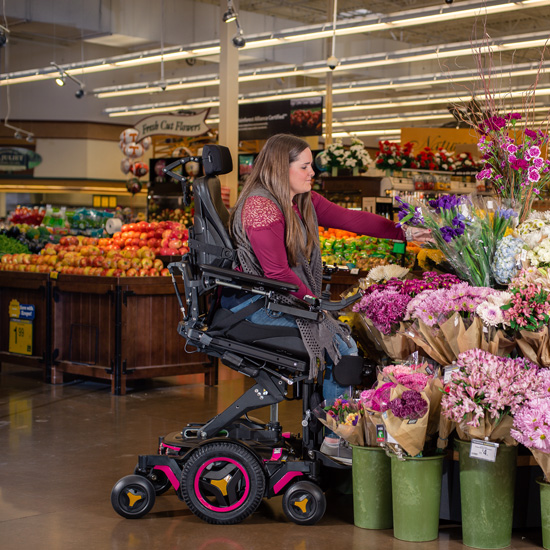Course Overview
A properly-fitted ultralight manual wheelchairs can improve function and mobility for people with disabilities of all ages. How an individual sits and fits in the wheelchair is a key predictor of safety, comfort and independence, and, over the long term, can impact the likelihood of secondary injuries. Thus, a wheelchair must be configured to its rider to ensure a balanced ride. This course will address the recommendations set forth by the Consortium of Spinal Cord Medicine and RESNA to stress the importance of an optimally configured manual wheelchair.
1 Contact hour(s)
On-site or Live Stream Lecture
Intermediate Level Course

What You Will Learn
Through this course, you'll deeper your knowledge of why proper seating, positioning, and fit are paramount for improving health outcomes for patients using ultralight manual wheelchairs and accomplish 4 key objectives:
-
The Importance of Configuration
You'll learn 2 ways in which manual wheelchair configuration can affect user propulsion.
-
Understand the Research & Health Outcomes
You'll dive into research articles that examine how properly-configured manual wheelchairs can positively affect patient health outcomes.
-
Proper Fitting & Measurements
You'll learn the 2 nontraditional measurements that play a crucial role in ensuring your patient or client enjoys a properly-fitting manual whelchair.
-
Understand Functional Improvements
Understand how a durable, lightweight, and custom-configured wheelchair can improve your patients' overall function and access to life.
Course Flow & Time Outline
| Minutes | Topic |
|---|---|
| 5 | Introduction, Overview, and Review Course Objectivess |
| 15 | Evidence Based Practice Manual Wheelchair Configurations |
| 20 | “Non-Traditional” Measurements and why they matters |
| 15 | Case Studiess |
| 5 | Summary, Question & Answers |
Statement of Clinical Relevance
Content of the activity directly relates to the scope of practice of occupational and physical therapy as defined by the American Occupational Therapy Association (AOTA) and the American Physical Therapy Association (APTA).
Completion Requirements
In order to obtain CEU credits, participant must attend course, sign in and out, and complete an on-line course assessment following completion of the course.
AOTA CEUs
0.1 AOTA CEU(s)
Contact Hours
1 Contact Hour(S)
Who is this program for?
Occupational Therapists
Occupational Therapy Assistants
Physical Therapists
Physical Therapist Assistants
Assistive Technology Professionals
Medical Suppliers & Providers
Complex Rehabilitation Professionals
AOTA Classification Code(s)
Category: OT Service Delivery
Level
Intermediate
Instructional Method
Sychronous Live, On-site Lecture or Live Stream Lecture, Discussion, Clinical Applications, and Demonstration
In Partnership with

Are you ready to improve your level of patient care and knowledge?
We believe that education is the first and most important step in helping qualified medical professionals elevate their care practice and provide better outcomes for their patients.
Register Now
